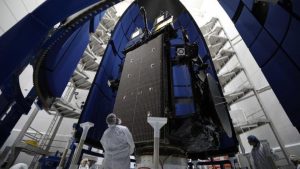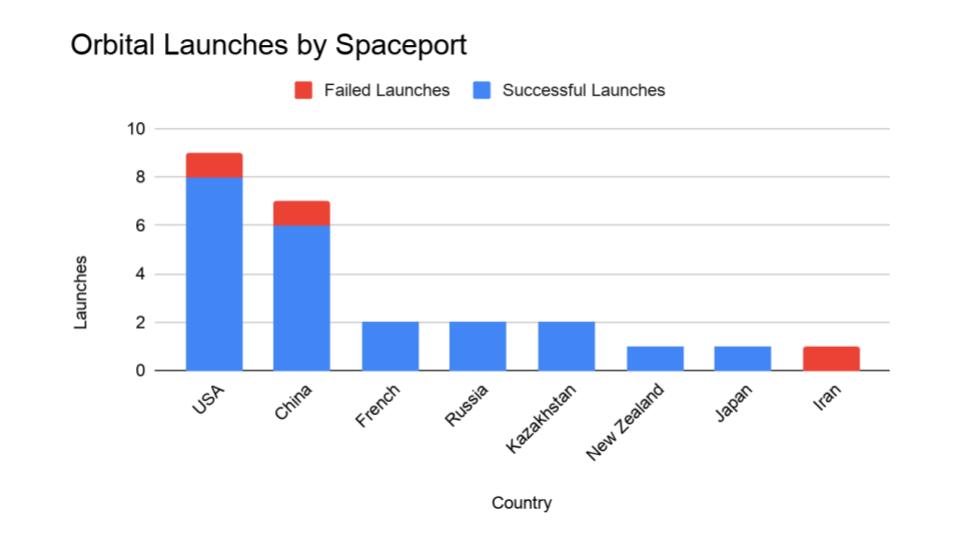
ULA launches an Atlas 5 with military satellites, while most other operations get cancelled due to COVID-19.
Links
ULA Launch
- Atlas 5 launch caps deployment of ultra-secure military communications network (ULA)
- Launch Video on YouTube
Effects of COVID-19 on Spaceflight
- Coronavirus raises interest in remote spacecraft operations (SpaceNews)
- ESA puts four science missions on hold during pandemic (SpaceNews)
- Lean team readies ESA’s Mercury-bound BepiColombo for planetary flyby (SpaceflightNow)
- OneWeb files for bankruptcy (SpaceflightNow)
Transcript
Hello, and welcome to the Daily Space for today Wednesday, March 32nd, 2020. I am your host Gordon Dewis (aka Keeper of Maps in Discord and Twitch), filling in for Annie who is under the weather and grounded from streaming. Most Mondays through Fridays, our team will be here putting science in your brain.
Usually Wednesdays are for Rocket Roundup, and today is no different. This is not an April Fool’s Joke.
Let’s get to it, shall we?

On Thursday, March 26th, a United Launch Alliance Atlas V rocket took off from Cape Canaveral. Carrying the sixth Advanced Extremely High Frequency (AEHF-6) satellite, this marked the first launch for the U.S. Space Force, which came into being in December 2019.

The AEHF constellation will provide jam-proof communications for the U.S. military. Built by Lockheed Martin, the six satellites will provide coverage from geostationary orbit.
The Atlas V flew in the 551 configuration, meaning it had a five metre diameter fairing, five solid rocket motors, and one single engine on the upper stage Centaur. Currently five metres is the largest payload diameter possible on the Atlas V, and the five SRBs indicate just how much extra help the core lower stage’s RD180 engine needed in getting up to orbital speed, due to the size of the payload.
The single engine variant was needed for this mission as it had to light three separate times to place the satellite into its proper transfer orbit, however a two-engine stage is also available for missions of shorter duration that need higher thrust burns, such as for the Boeing Starliner crew capsule.
Both variants carry the same amount of fuel, but the 2-engine version is capable of greater thrust as you might imagine.

Other than the AEHF-6 launch last week, there hasn’t been a lot of activity to report on.
The coronavirus pandemic is causing organizations, such as the European Space Agency, to change the way that it conducts its operations. About a week ago, ESA announce that it was putting four of its science missions into a “temporary standby” mode to allow it to reduce the number of controllers needed at its operations centre in Germany.
The four-satellite Cluster space science mission in Earth orbit, the Solar Orbiter spacecraft, the ExoMars Trace Gas Orbiter and the Mars Express orbiter have all gone into a safe mode, suspending science operations. These missions are long-duration missions in stable orbits, so turning off their science instruments and placing them in safe-mode should have a negligible impact on their overall missions.
Cluster studies the Earth’s magnetosphere and was launched in 2000. The Solar Orbiter, on the other hand, was launched in early-February and is still in the early phases of commissioning its instruments.
Suspending these missions will also allow them to devote staff to other missions, including BepiColumbo, which is on its way to Mercury and has a critical trajectory adjustment coming up in a week and a half’s time.
No official word on what NASA is doing, but they can do some of their operations remotely, but they still require some controllers to be working in their operations centers, particularly those supporting the ISS.

To wrap things up, here’s a running tally of a few spaceflight statistics for the year:
- Toilets burned up: 1
Total new satellites in orbit: 345 (includes those launched from other in-orbit craft, such as the ISS)
- Total satellites from launches: 331
Annie keeps track of orbital launches by where they launched from. Here’s that breakdown:
Total 2020 successful launches: 22 (+ 3 failures so far)
Total attempts by country:
- USA: 9
- China: 7
- French Guiana: 2
- Russia: 2
- Kazakhstan: 2
- New Zealand: 1
- Japan: 1
- Iran: 1
And that rounds out our show for today.
Thank you all for listening. Today’s script was written by Dave Ballard and edited by me, Gordon Dewis. The Daily Space is produced by Susie Murph, and my studio production assistant today was Paranor, one of our über mods. This has been a production of the Planetary Science Institute, a 501(c)(3) non profit dedicated to exploring our Solar System and beyond. We are here thanks to the generous contributions of people like you. Want to become a supporter of the show? Check us out at patreon.com/cosmoquestx


 We record most shows live, on Twitch. Follow us today to get alerts when we go live.
We record most shows live, on Twitch. Follow us today to get alerts when we go live.